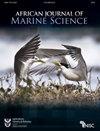Comparison of the particle size distributions of sediment collected from sandy seafloor using a Van Veen grab and cone dredge
IF 1.4
4区 生物学
Q3 MARINE & FRESHWATER BIOLOGY
引用次数: 1
Abstract
Sediment particle size is an important environmental parameter that influences benthic species composition and is frequently used in habitat and ecosystem classification systems. In South Africa, benthic grabs are regularly used to collect seafloor sediment samples for particle size analysis. However, grab sample failures are a common, time-consuming and costly exercise, particularly in deep-sea work. This study compares replicate sediment samples collected using a custom-designed cone dredge and a conventional Van Veen grab, deployed at nine stations, ranging from 355 to 508 m in depth, in the Southern Benguela Sandy Shelf Edge ecosystem off the west coast of South Africa. No significant differences were detected between sediment properties of the samples collected by the different devices (all grain size categories [particles <3.9 to >2 000 μm]: D = 0.101, p = 0.693; fine grain size categories [particles ≤63 μm]: D = 0.177, p = 0.480). This finding suggests that, despite its different mode of operation, the cone dredge collected an appropriate sediment sample for a particle size analysis of this ecosystem, and thus the device might be usefully applied in other areas of a similar nature. The cone dredge can be considered a cost-effective and efficient alternative for sampling seafloor sediment at depth. However, further comparative analyses are required for different substrates and ecosystem types.用范维恩抓斗和锥形挖泥船从沙质海底收集的沉积物的粒度分布比较
沉积物颗粒大小是影响底栖物种组成的一个重要环境参数,经常用于栖息地和生态系统分类系统。在南非,海底抓斗经常被用来收集海底沉积物样本,用于粒度分析。然而,抓取样本失败是一种常见的、耗时且成本高昂的操作,尤其是在深海工作中。这项研究比较了使用定制设计的锥形挖泥船和传统的Van Veen抓斗收集的重复沉积物样本,该抓斗部署在南非西海岸南本格拉Sandy Shelf Edge生态系统的九个站点,深度从355米到508米不等。不同装置采集的样品的沉积物性质没有显著差异(所有粒度类别[颗粒2000μm]:D=0.101,p=0.693;细粒度类别[颗粒≤63μm]:D=0.177,p=0.480)。这一发现表明,尽管其操作模式不同,锥形挖泥船收集了适当的沉积物样本,用于对该生态系统进行粒度分析,因此该设备可能会在其他类似性质的地区有用。锥形挖泥船可以被认为是一种具有成本效益和高效的海底沉积物取样替代方案。然而,需要对不同的基质和生态系统类型进行进一步的比较分析。
本文章由计算机程序翻译,如有差异,请以英文原文为准。
求助全文
约1分钟内获得全文
求助全文
来源期刊

African Journal of Marine Science
生物-海洋与淡水生物学
CiteScore
2.60
自引率
16.70%
发文量
17
审稿时长
6-12 weeks
期刊介绍:
The African (formerly South African) Journal of Marine Science provides an international forum for the publication of original scientific contributions or critical reviews, involving oceanic, shelf or estuarine waters, inclusive of oceanography, studies of organisms and their habitats, and aquaculture. Papers on the conservation and management of living resources, relevant social science and governance, or new techniques, are all welcomed, as are those that integrate different disciplines. Priority will be given to rigorous, question-driven research, rather than descriptive research. Contributions from African waters, including the Southern Ocean, are particularly encouraged, although not to the exclusion of those from elsewhere that have relevance to the African context. Submissions may take the form of a paper or a short communication. The journal aims to achieve a balanced representation of subject areas but also publishes proceedings of symposia in dedicated issues, as well as guest-edited suites on thematic topics in regular issues.
 求助内容:
求助内容: 应助结果提醒方式:
应助结果提醒方式:


